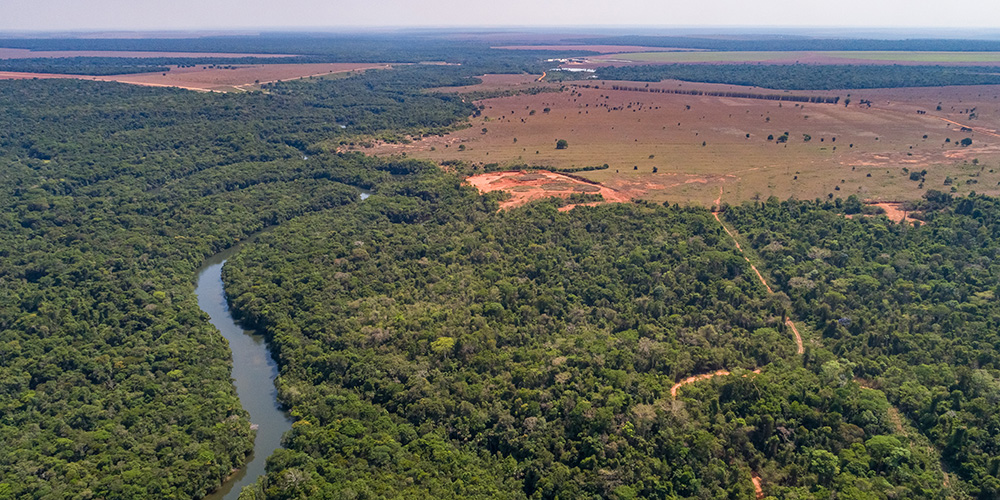Expansion of agricultural land threatens climate and biodiversity
Food, feed, fiber, and bioenergy: The demand for agricultural raw materials is rising. How can additional cultivation areas be reconciled with nature conservation? Researchers at the University of Basel have developed a land-use model that provides answers.
13 August 2024
By 2030, global cultivation areas are expected to expand by 3.6 percent, increasing global agricultural production by two percent. This projection comes from the Food and Agriculture Organization (FAO) of the United Nations and the Organization for Economic Cooperation and Development (OECD).
An interdisciplinary research team led by Dr. Florian Zabel and Prof. Dr. Ruth Delzeit from the Department of Environmental Sciences at the University of Basel has investigated which areas worldwide are most likely to be affected by future agricultural expansion. The study's findings were published in the journal Nature Sustainability.
Higher production, more greenhouse gases
The researchers developed a land-use model that identifies the most profitable areas worldwide for future agricultural expansion, taking into account both socio-economic and agro-ecological criteria. They then assessed the economic and ecological impacts of land-use changes in these areas. According to the study, new agricultural areas are expected to emerge mainly in the tropics, where there is still significant potential to increase agricultural production despite climate change.
However, since cropland stores much less carbon than the original vegetation, the study estimates that land-use changes would emit about 17 gigatons of CO2 in the long term. This is almost half of the current annual global CO2 emissions. In the areas affected by land-use changes, biodiversity would also decline by 26 percent. "The expansion of agricultural land would therefore be a concerning development, particularly for global climate protection and efforts to preserve biodiversity," says co-lead researcher Florian Zabel.
Conservation also makes economic sense
In light of recent political efforts to protect nature, forests, and biodiversity globally, the researchers also evaluated the impact of various scenarios of global conservation policies and their consequences. It became clear that conservation measures can also have unintended side effects: Preventing the expansion of agricultural land into forests, wetlands, and existing protected areas by law would shift agricultural expansion mainly to grasslands. This could have a negative effect on the biodiversity of these areas, as grasslands generally have higher diversity than other lands.
On the other hand, sticking to conservation efforts can also make economic sense. “Contrary to expectations, the preservation of forests, wetlands, and existing protected areas has little impact on the gross domestic product of the respective regions. Global agricultural production is also only slightly reduced as a result. In return, the greenhouse gas emissions caused by expansion are significantly reduced," says lead author Julia Schneider of Ludwig-Maximilians-Universität München. This finding is particularly relevant in the context of global food security: it shows that the conflicts between the provision of agricultural goods and environmental protection can be mitigated.
Improve planning of protected areas
The study makes a valuable contribution to answering the question of which areas are particularly worth protecting. In the Kunming-Montreal Biodiversity Convention, the international community has set a goal to protect 30 percent of the global land surface by 2030.
The current study identifies regions that are particularly at risk in the future and highlights the potential impacts of agricultural expansion on the economy and the environment. "This enables the planning of protected areas in such a way that they achieve the broadest possible impact on as many objectives as possible, such as climate and biodiversity protection, while also considering economic interests," says Florian Zabel.
Original publication
Julia M. Schneider et. al.
Effects of profit-driven cropland expansion and conservation policies.
Nature Sustainability (2024), doi: 10.1038/s41893-024-01410-x



